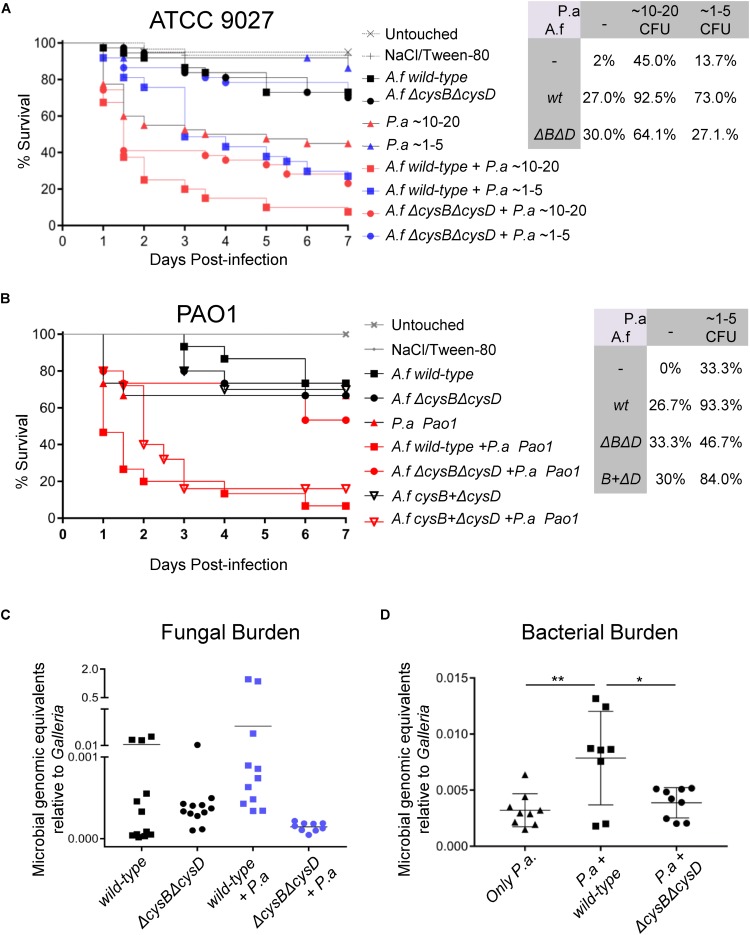FIGURE 5.
Pseudomonas aeruginosa derived VSCs synergize with A. fumigatus in co-infection, increasing G. mellonella mortality. (A) A G. mellonella model of infection with a low dose (50 conidia) of A. fumigatus (A. f) wild-type or ΔcysBΔcysD caused low mortality (27–30%). Infection with a low dose of P. aeruginosa ATCC 9027 caused only 13.7% mortality for 1–5 CFU or 45% for 10–20 CFU. P. aeruginosa co-infection with Aspergillus wild-type dramatically increased mortality to 73% for 1–5 CFUs and to 92.5% for 10–20 CFUs. In contrast, co-infection with the ΔcysBΔcysD mutant caused only a moderated increased in mortality to 27.1% for 1–5 CFUs and to 64.1% for 10–20 CFUs (Survival graph shows pool data of 3 independent experiments). (B) Co-infection of ∼1–5 CFU P. aeruginosa PAO1 with A. fumigatus (A. f) wild-type caused a strong increase in mortality (from 26–33% in monomicrobial infections to 93.3%, 2.8 fold). In contrast, co-infection with the A. fumigatus ΔcysBΔcysD mutant caused a much more moderate increase in mortality (to 46.7%, 1.4 fold). Reintroduction of the cysB gene in the ΔcysBΔcysD mutant (cySB + ΔcysD) reconstituted the synergism of mortality of con-infection (84%) (Survival graph shows pool data of 3 independent experiments). (C) Four days after infection, Galleria co-infected with A. fumigatus wild-type and P. aeruginosa ATCC 9027 showed a tendency toward having an increased fungal burden and (D) had significantly higher bacterial burdens. ∗∗P < 0.05 and ∗∗∗P < 0.01.

